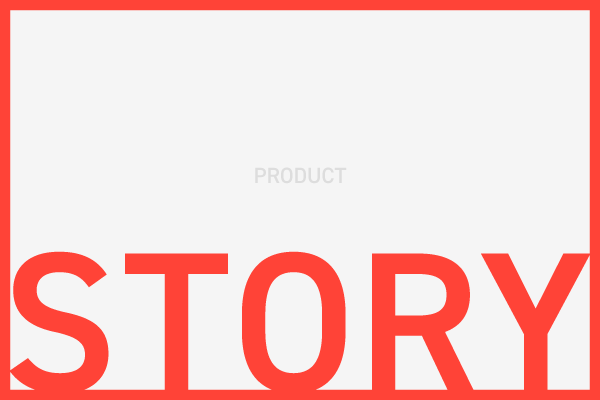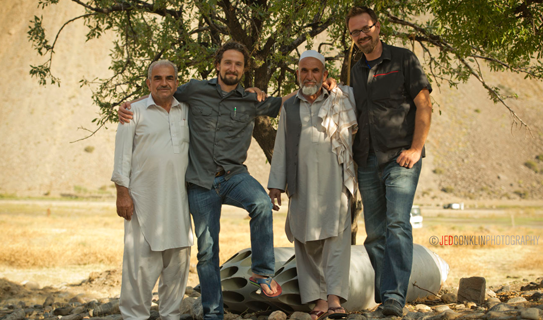Tag Archives: Bigger Than This
Five Ways To Transform Into An Authentic Brand That People Will Love
The full article of below’s excerpt was first published on Forbes on 05/16/18.
How can a brand transform into being authentic when authenticity is the very core of any brand?
Last year, I wrote a book in which I studied commodity brands that people go crazy for in today’s age of innovation and disruption. It fascinated me to think that companies offering commodities — products that people don’t necessarily need more of in the marketplace, and that see no innovation in functionality or design — were flourishing. All of these companies had only two things in common that created their success: fantastic brand thinking and a truly authentic story to tell.
There’s a lot to learn from these brands, even for an established brand that may have lost its authenticity along the way. Here are five traits I saw in these companies and how they can be reinfused into any brand that wants to connect more deeply with its audience:
1. Story
Telling a brand’s story is key to branding and a fundamental element of any marketer’s playbook. Charles Revson, founder of Revlon, famously said, “In the factory we make cosmetics; in the store we sell hope.” Stories can change brand perception more than anything else, but they have to be authentic in order to resonate.
Rewrite a brand’s story by going back to its roots. You have to feel the passion that initially formed the brand, then work your story from there. People love visionaries, problem-solvers, DIYers. They love passion and, in return, will become passionate about your brand.
2. Cause
Lately, we have been “cause-washed” by thousands of startups jumping on the “buy one, give one” bandwagon started by the TOMS and Warby Parkers of the world. Yet there is a reason for their success. According to a survey, almost two-thirds of respondents said they actively seek out brands that support certain causes, and they’d be more likely to purchase from a brand that supports a cause they agree with.
Instead of writing a big year-end donation check or blindly giving a product away for every product purchased, ensure the cause you support is fully integrated into your brand’s messaging and can only be seen as truthful. Base it on a logical proposition that creates an immediate emotional connection with your audience. Plan for it to be expandable as your service or product offering diversifies.
3. Delight
Researching commodity brand sensations, I stumbled upon a slew where the small delights they offered were bigger than the actual product. A great example is pet supply startup Chewy, which takes delighting its customers’ love of their pets to heart. The brand sends out handwritten cards, including the customer’s pet’s name and provides a 24-hour hotline for customers to ask pet-food-related questions. How impactful can the brand trait of simple customer delight exactly be? Well, Chewy was acquired by PetSmart.com for $3.35 billion in 2017, which was a record for an e-commerce company.
The core idea of consistently providing small but thoughtful delights is often the only thing setting brands apart.
If you’re operating in a rather mundane segment, think about which part of your audience is not having fun, then catch them when and where they least expect it and shake them up through delightful surprises. Start with email and slowly work through your entire communication chain. One interaction at a time will make your brand more loved.
4. Transparency
You will likely recall when Avis, which held the No. 2 spot behind market leader Hertz, famously launched its 1963 brand campaign with the tagline, “When you’re only No. 2, you try harder. Or else.” That was sheer brand transparency gold.
Today’s startups enter markets and verticals that have been known for not being truthful. If your brand falls into a category that aches for transparency, comply and tell all. Customers will instantaneously trust your brand as a whole and its products over your competitors.
5. Solidarity
Aligning a brand empathetically with someone else’s dream is a move I saw many startups discover. Often going after an initial niche audience, their entire messaging became aligned around their tribes’ point of view. They exclude everyone else and thrive.
Planet Fitness is a poster child for leading with solidarity. “We don’t judge” is the motto, and “judgment-free zone” is the verbal brand glue that holds its 1,300-plus franchise locations together. Occasional free donuts at the fitness center entrance and tweets about sweets connect more than 6 million members that would otherwise not have easily found their tribe in a traditional gym.
Perhaps it’s time for your brand to wholeheartedly support your tribe’s feelings and actions and, in turn, become one of them. Forming, not forcing, a friendship with your audience is the best way to create long-term brand love.
When Values are Bigger Than the Product: How to Win Hearts Through the Sole Power of Belief
Below article was first published in Conscious Connection Magazine on 04/09/18.
As a brand strategist, I am continuously surrounded and personally obsessed with design and tech innovation. That paused for me last year when my obsession shifted to startups that I saw win hearts (and minds) solely through empathy with their tribes while offering nothing but, what can be seen as, commodity products. I did what one has to do when a subject turns into an obsession and I put pen to paper and wrote a book about this silent phenomenon, which was released earlier this year: ‘Bigger Than This – how to turn any venture into an admired brand.’
I distilled my findings into 8 traits that any venture can use to infuse a deeper meaning into its brand DNA. One of those traits is ‘Belief’ and the exclusive excerpt below will show you how you can launch a seemingly unchanged product or service to great success if it is coupled with strong beliefs:

The financial crisis of 2008 led to uncertainty and unemployment, which led to people losing trust not only in big banks but in other large corporations, too. Not coincidentally, people went frugal and started crafting and cooking again, preferring local eateries and buying artisanal products. Many small brands were born out of consumers’ desire to associate with those they could trust. New tribes formed based on a desire for honest products crafted by honest people – people they can trust.
We are still feeling the repercussions of this shift. Today, we are seeing the biggest of brands distancing themselves openly from politicians whose values don’t align with those of their brand. “While companies are naturally designed to be moneymaking enterprises, they are adapting to meet new social and political expectations in sometimes startling ways,” David Gelles states in The New York Times.
Even Fortune 500 companies understand they have to stay true to their tribe and the values supporters bought into. Today, it is a bigger risk not to speak up. One of the biggest brand rules of all time is “Do not talk politics.” This all went out the window, sparked by a divided America in the 2016 elections and the resulting controversial leadership of Donald Trump. Meanwhile, Brexit took place the same year in Great Britain.
The largest consumer brands from Nike, Starbucks, Airbnb, Apple and Amazon to Uber and Microsoft all spoke out against Trump’s immigration reform. Nordstrom and Neiman Marcus pulled Ivanka Trump’s fashion line. Coca-Cola, Airbnb and even Budweiser aired commercials supporting diversity in obvious opposition to POTUS’ ideologies. REI’s CEO, Jerry Stritzke, spoke out publicly against immigration reform as well as the plan to review 100,000 acres of public lands and urged people to write Secretary Ryan Zinke to keep the protections in place.
These brands are vocal because it is expected of them by today’s consumers.
Their message: We are in this together. We share the same beliefs.
A day after Starbucks pledged to hire 10,000 refugees, the Twitter hashtag #BoycottStarbucks was trending. Despite any lost sales, Starbucks’ decision was a risk well worth taking. The brand had to take a stand in support of the values it shares with the core demographic it serves.
Any brand can stand for something meaningful, but to do that, it has to define and embody its values. Ideally, these values will align with the values of not only their customers and clients, but also the community and their contributions to it. You and the company have to intentionally “live the story that embodies the brand’s values,” local business advocate DW Ferrell, CEO and co-founder of Localism!, told me in an interview I conducted for Forbes.com.
To do that, Ferrell suggests asking yourself, “How will you align profit and purpose? How will your model support your mission?” Part of this entails creating your own vernacular and defining your terms. When you do this and share it publicly with your community, members who share your views will celebrate your values; others may go elsewhere. This forces you to hold yourself accountable. You are saying, “This is our ideal, our identity. Does it resonate with you? Great. We now need to be true to you, because you are behind us.
While spending quality time with my folks back in Austria, I came across shoemaker GEA, a beautiful example of how belief can define a brand. The company produces handmade, long-lasting and easy-to-repair traditional footwear onsite in one of Austria’s regions with the highest unemployment. GEA’s social and environmental record is outstanding.
So far so great, but now add the underlying layer of belief: the shoe company publishes a political newspaper called Brennstoff (translated: Fuel), in which the charismatic owner, Heini Staudinger, boldly voices his opinions on hot topics such as politics, religion and the economy. He pushes the envelope on a very clear and steady social course, one that many don’t appreciate; one that upsets corporations, investors, banks and the government; and one that appreciators truly love. The for-profit company, which is named after the goddess of earth, condemns consumerism and capitalism (even releasing its own currency called “Waldviertler,” which is accepted by 200 regional businesses), yet it attracts so much money through crowdfunding that its team is looking past its many stores to unconventional ways of expanding its operations, such as founding an academy.
Staudinger welcomes the chance to explain his reasons. “I am not very interested in capital. I am very interested in life,” he says in the documentary Das Leben ist keine Generalprobe (Life Is Not a Rehearsal by Nicole Scherg, which I found out was coincidentally produced by my brother’s production firm, NGF).
Being unafraid to exclude the many and to be extremely powerful to the few is what makes a true brand based on shared belief and values truly great. GEA is living proof that going against the grain and staying true to your personal beliefs, even if they are based on extreme political opinions (or religious beliefs), can be a powerful branding tool. It may turn out to be your very own undiluted and uncensored personality that will turn into your brand’s personality, just as it did for Staudinger.
The Belief Commandments:
- Shared values will always have a bigger impact on your tribe than your products alone.
- The only way to deeply connect with your tribe through a shared belief is by deeply understanding your members. This takes a lot of monitoring, listening and, most of all, conversing in an open and non-corporate manner on social media channels as well as in person (at events rather than focus groups, in case you were thinking it was that easy).
- Passionate beliefs, if voiced in an honest, empathetic and bold manner, can become the driving force of your business. Shared values and the expression of passionate beliefs will also likely play a significant role in sparking sales and increasing the value of shares as an added benefit.
Most of us want to create the innovation brand that continuously disrupts our segment. You now know that having a “normal” product or service offering does not mean you cannot connect with today’s customer in a deep, meaningful and sticky way.
You just need to feel the urge to move the needle forward to transform into a brand that has a story to tell and an even better story to live.
Turn Any Venture Into a Brand — by Caring Deeply About a Mutual Cause
Below article was first published on Sustainable Brands on 01/25/18.
This is an excerpt from Fabian Geyrhalter’s upcoming book, Bigger Than This: How to Turn Any Venture Into an Admired Brand. One of eight traits discussed in Bigger Than This is ‘cause,’ which we dive into here…

Aligning your commodity brand’s existence with a cause can give you strong brand positioning, if done truthfully. Will Young, founder and president of Sydney-based Campos Coffee, states his reason for a purpose- and cause-oriented brand in a company video: “If we are not in it for good, then there is no reason to wake up every morning and go to work.” His words would not be as powerful if Campos Coffee had not demonstrated its commitment to ethics and philanthropy in coffee by being a Fair Trade Certified organization that calls itself “Direct Trade” by improving education and living standards of the communities with which it works.
There is a powerful reason his approach works. Over the past five years, it has become somewhat of a staple for startups founded by millennials to identify a social cause that can be activated in an authentic way to manifest that the purpose of a product or service goes deeper than solely generating sales. “Purpose” is ingrained in their thinking. Millennials’ emphasis on purpose is probably why there is even a startup, Pledge 1%, to foster startups that seek to commit 1% of their equity, product, profit or time to charity. As Pledge 1% CEO Amy Lesnick told Fast Company: “In 15 years we might not even exist, as early-stage philanthropy will be as common as setting aside equity for future employees.”
The best way to tap into the cause-related marketing trend is to think unselfishly. If you are an entrepreneur considering selling any product, whether a commodity or not, ask yourself why it matters to bring it into this world at this very point in time (and for the long term), and why your audience will deeply care about an often otherwise labeled “so what?” product.
One brand that has answered this question in a unique way is the Package Free Shop. It started as a commodity store (wait, a store just by itself is seen as a commodity by many today!) that specializes in selling commodities such as toothbrushes, razors, soap, bags, laundry detergent, etc. The Package Free Shop is 100% cause-based, selling reusable alternatives to single-use, disposable commodities while teaching customers how to live a “zero-waste life.”
Also ask yourself what your brand will be giving back. Can you identify a social cause that can be activated in an authentic way to demonstrate that the purpose of your product/service goes deeper than solely generating sales? That is the easiest way.
Research shows how much consumers value brands that support charitable causes. A recent cause marketing survey conducted by research firm Toluna showed that 39% of consumers buy into integrated cause strategies such as the “sell one, donate one” model used by TOMS Shoes. The majority of consumers actively seek out brands that donate to causes and say that they would be more likely to purchase a brand that supports a shared cause, according to the survey. Millennials top that list, with 49% seeking out cause brands.
Buy-one-give-one marketing is just one of the many ways brands are connecting with a cause. Here are some other creative ways startups are giving back and connecting their cause with a target audience’s consciousness, outside of the one-for-one model:
- Supporting artisans by ethically sourcing products in developing countries and providing them with steady work at far-better-than-usual pay, along with social programs, education and skills training.
- Giving back 1% to your (shared) cause.
- Creating an eco-friendly, organic, chemical-free, cruelty-free (you name it) model, as long as it supports a shared cause with your audience.
- Equal pay for women, which is sad to have to even mention still today but is unfortunately not available in most companies.
- Form a B Corp, thereby having “to meet rigorous standards of social and environmental performance, accountability, and transparency.”
- Hire staff deemed “unemployable” because of stigmatized health conditions, impairments or felony convictions, and provide a second chance.
- Run a co-op, owned by your employees or your customers.
Of course, no matter what method you choose, your cause has to create true value for the recipients (both the consumer as well as the beneficiary). It’s also important to think all the way to the production of your products; Bennison, for instance, has “mothers in Peru” craft its “one-for-one” line of children’s wear.
If you make cause the center of your brand philosophy, watch out for what I call cause-stamping (think of it as a cousin of greenwashing). The TOMS-branded Apple Watch band (advertised with the marketing message “Give Time”) reflects a clear brand misalignment, despite TOMS’ provision of a year of solar light to a person in need for every band purchased. Unlike TOMS shoes, Apple Watches are clearly a luxury item, priced beyond the reach of many consumers, making the feel-good brand connection seem awkwardly inauthentic when seen on one and the same product. For Apple, it may just have been a sad attempt to buy into a “still-cool” brand ethos in times when the company lacked product innovation headlines.
Today’s exceptional cause-based startups find a truly unique problem to solve by giving back or by applying the otherwise overplayed buy-one-give-one tactic. Here is what you can take with you as you launch, or expand upon, a brand built on the foundation of cause:
- Base the cause on a logical proposition that creates an immediate emotional connection with your target audience.
- Ensure your cause can only be seen as truthful.
- Be certain your cause is extendable enough to expand with you as your product offering diversifies.
- Consider whether the cause directly touches your (current or future) staff’s hearts in order to foster a strong company culture based on purpose.
- Hold yourself accountable and issue progress reports on a yearly basis to ensure you are meeting your own expectations and to spread awareness of the cause (and subsequently your brand).
- Start by giving, then move on to fully embodying the cause in all other aspects of your business — including hiring, location, sourcing and production.
You can read more about how to turn into a cause-based brand, as well as learn about the other 7 traits of today’s admired brands in my book “Bigger Than This – How to turn any venture into an admired brand.”
5 Things I Wish Someone Told Me Before I Became CEO
Yesterday marked the release of my new book, ‘BIGGER THAN this – How to turn any venture into an admired brand’ and I was fortunate enough to have Thrive publish an interview with me coinciding with the book release.
The article turned into a very personal Q and A. Most likely because the interview was conducted while I was vacationing up in the serene Austrian mountains, it turned out so very sincere.
Sharing it with you today as I candidly talk about how I turned my design agency into a brand consultancy and I share the key insights I learned in my close to 2 decades of being a creative entrepreneur. I hope you get something out of it as we start off the year:
“Say No, And Say It Often” Words Of Wisdom With Fabian Geyrhalter, Author Of ‘Bigger Than This’







